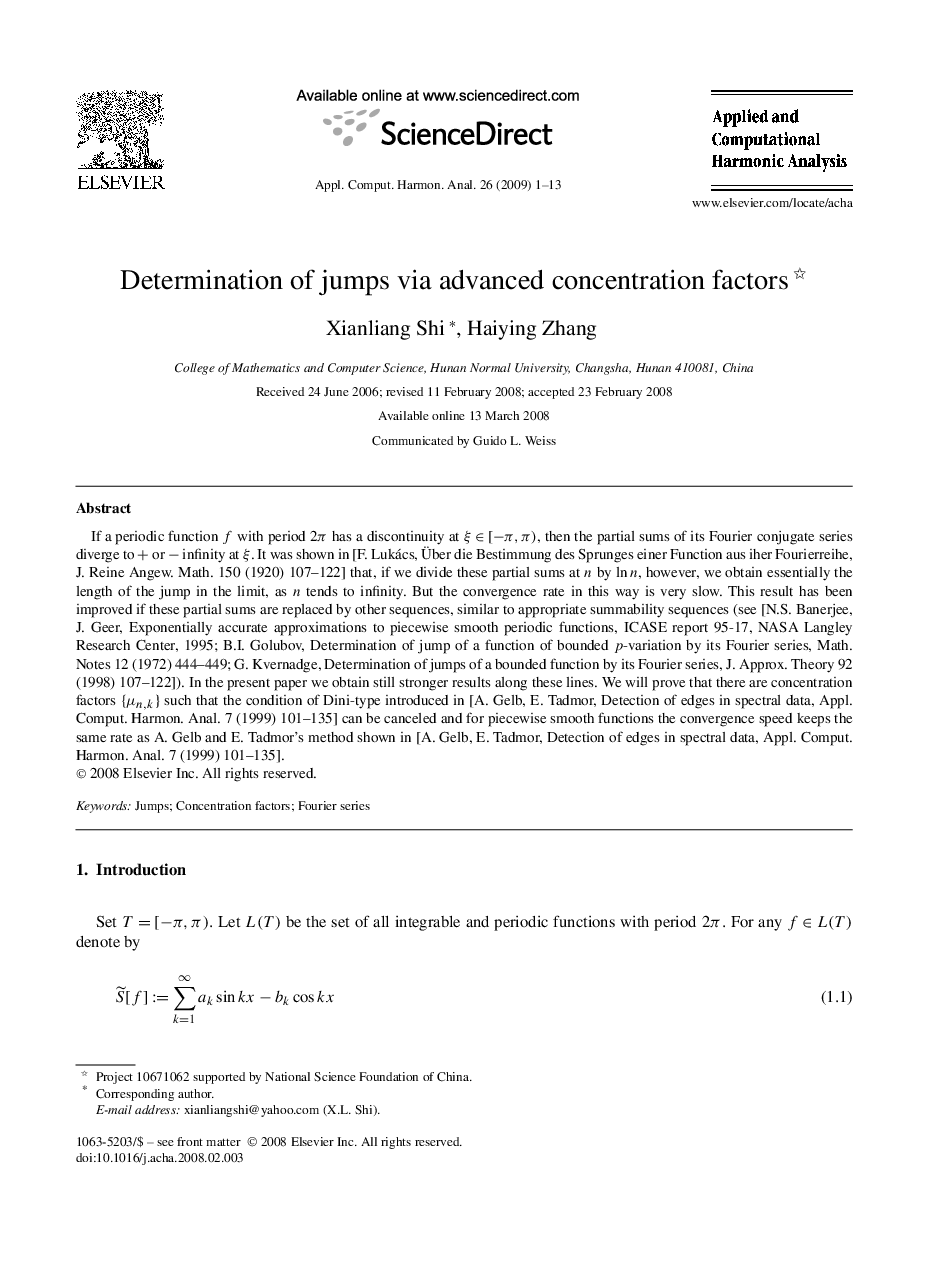| Article ID | Journal | Published Year | Pages | File Type |
|---|---|---|---|---|
| 4605504 | Applied and Computational Harmonic Analysis | 2009 | 13 Pages |
If a periodic function f with period 2π has a discontinuity at ξ∈[−π,π), then the partial sums of its Fourier conjugate series diverge to + or − infinity at ξ. It was shown in [F. Lukács, Über die Bestimmung des Sprunges einer Function aus iher Fourierreihe, J. Reine Angew. Math. 150 (1920) 107–122] that, if we divide these partial sums at n by lnn, however, we obtain essentially the length of the jump in the limit, as n tends to infinity. But the convergence rate in this way is very slow. This result has been improved if these partial sums are replaced by other sequences, similar to appropriate summability sequences (see [N.S. Banerjee, J. Geer, Exponentially accurate approximations to piecewise smooth periodic functions, ICASE report 95-17, NASA Langley Research Center, 1995; B.I. Golubov, Determination of jump of a function of bounded p-variation by its Fourier series, Math. Notes 12 (1972) 444–449; G. Kvernadge, Determination of jumps of a bounded function by its Fourier series, J. Approx. Theory 92 (1998) 107–122]). In the present paper we obtain still stronger results along these lines. We will prove that there are concentration factors {μn,k} such that the condition of Dini-type introduced in [A. Gelb, E. Tadmor, Detection of edges in spectral data, Appl. Comput. Harmon. Anal. 7 (1999) 101–135] can be canceled and for piecewise smooth functions the convergence speed keeps the same rate as A. Gelb and E. Tadmor's method shown in [A. Gelb, E. Tadmor, Detection of edges in spectral data, Appl. Comput. Harmon. Anal. 7 (1999) 101–135].
